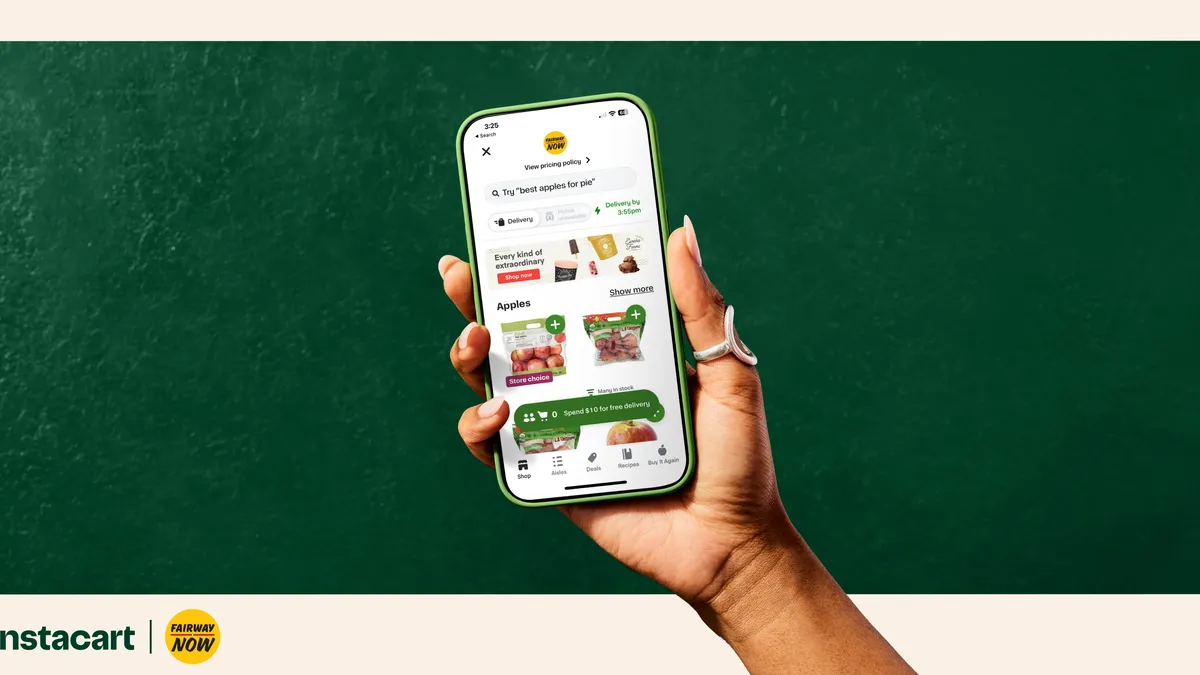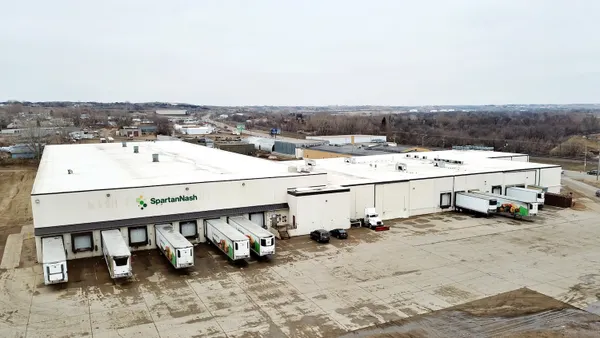Dive Brief:
- Instacart reported strong third-quarter results Tuesday, as the company’s total revenue, number of orders, gross transaction volume (GTV) and transaction revenue were all up by double digits year over year. Advertising and other revenue was up 11% year over year to $246 million, accounting for 3% of GTV.
- Instacart said rising order volume, higher average order value, and increases in advertising and transaction revenues drove its Q3 results.
- Instacart posted “strong profitability” in Q3 and achieved its fourth consecutive quarter of positive GAAP net income, CFO Emily Reuter said during an earnings call Tuesday.
Dive Insight:
Instacart’s “secret sauce” is its deepening retailer integrations — an “under-appreciated” part of the company’s business, CEO Fidji Simo told investors, pointing to its launch of 150 features with Sprouts Farmers Market over the last 18 months as an example.
“Grocers increasingly turn to us as a tech ally to develop experiences they wouldn’t dream of building on their own,” Simo said. “This is especially true with our ongoing investments in AI, which build on more than a decade of specialized grocery data.”
As Instacart powers ahead as an omnichannel solutions provider for retailers, Simo noted early in the call with investors that the company is fulfilling both large and small e-commerce grocery baskets.
“We are truly building a habit so that over time customers end up spending their full grocery budget with us,” Simo said. “While other platforms are selling some grocery items, they are not building customers’ grocery habits, which is critical to retaining customers with good economics.”
As Instacart has broadened its services beyond e-commerce — offering up retail media and in-store technology like smart carts — the company still sees room for grocery e-commerce growth: “We know the grocery market is still vastly under-penetrated online,” Simo told investors.
Caper Carts are one of the technologies that Instacart is particularly focused on for future growth. Simo said its smart carts solution “is a very, very big opportunity for us because 87% of the grocery industry is still offline.”
The company announced several partnerships in recent months to roll out its smart carts as it looks to demonstrate the technology’s usefulness in different markets, Simo added, noting that the number of Caper Cart deployments will continue to grow in 2025.
During Q3, Instacart saw “promising early results” from the addition of restaurants to its platform in June, Simo said. The company believes it has “a lot more room to grow and build the flywheel between restaurants and groceries,” she said.
Instacart is continuing to diversify its ads business, including the type and number of brand partners and the number of different sites where ads appear, Simo said. While some major CPGs have pulled back their ad spending, executives noted advertising demand is increasing from emerging brands.
During Q3, Instacart’s GTV growth of 11% and adjusted EBITDA of $227 million beat the high end of its guidance ranges, Reuter said. Orders grew 10%, average order value increased 1%, and advertising and other revenue outperformed expectations with 11% growth, she said.
During Q3, Instacart named former Uber executive Anirban Kundu as its chief technology officer.
Looking to Q4, Instacart is expecting GTV to fall between $8.5 billion and $8.65 billion, with year-over-year growth between 8% to 10% and adjusted EBITDA of between $230 million to $240 million. Reuter noted that Ahold Delhaize’s recent outage had a “small impact” on Instacart’s business.
Instacart’s stock price at Tuesday’s close was up more than 100% since the start of the year but has sagged more than 12% Wednesday morning as investors appear disappointed with the company’s Q4 outlook.














